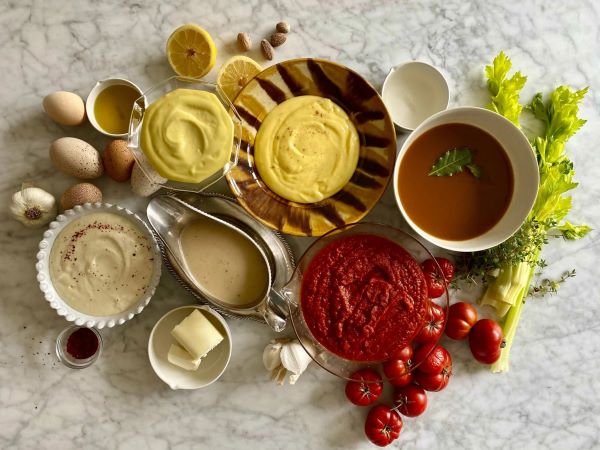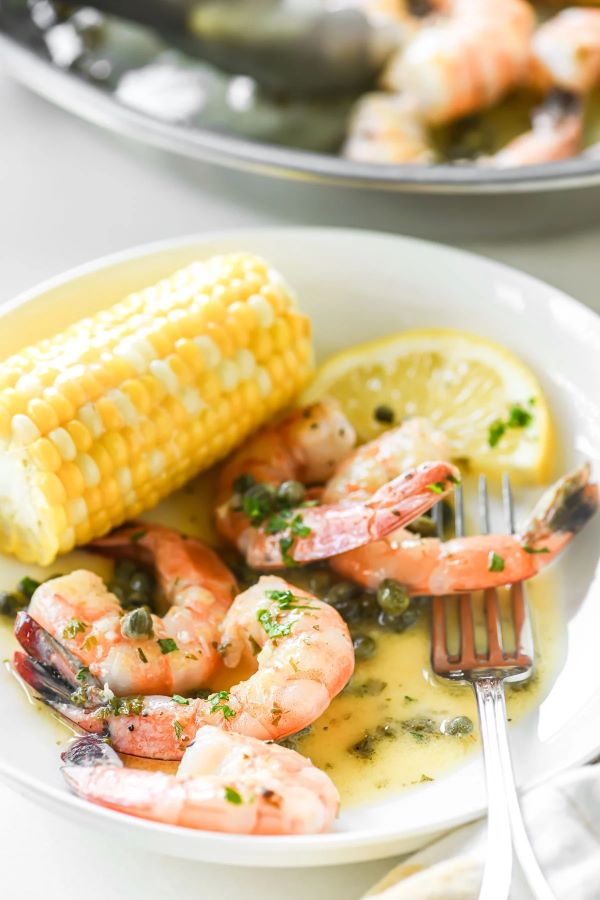Recipe Ideas from Our Family to Yours…
Scroll to the bottom for a listing by category from Appetizers to Desserts! Bon Appetit!

The Magic of a Sauce 🙂
Sauces are defined as “liquids that accompany the main ingredients of a dish”. They enhance flavor in different ways. Sometimes, they’re added to intensify the food’s own flavor, while other times we may use them to complement the dish with contrasting tastes. Sauces were created from our constant need to make things tastier and stimulate our senses!
The word “sauce” actually comes from the Latin word salsus, meaning salt – the first type of flavoring we ever used. Let’s face it: meat, vegetables, and grains, can be pretty bland on their own, which is why salt was used to boost natural flavors. Sauces, however, are much more complex than just simple flavorings like salt, pepper, or sugar. They provide a pleasant mouthfeel to foods, gives food more flavor, lends moisture, and also gives an attractive appearance to any dish. But when exactly did we start making proper sauces?
The first record (or recipe) of a sauce, is dated back to 25 BC. It’s a poem that describes a farmer making a sauce of sorts, by pounding herbs, cheese, vinegar, and oil – you could say it was the great-great-grandfather of the modern pesto!
The 5 great sauces represent the sauces that it is essential for every cook to master and which are the basis of most of the sauces that we know today! These techniques were brought in the 18th century by the Father of French cuisine, Antonin Careme through a methodology grouping together cooking principles that allow cooking an infinite number of sauces from the knowledge of these 5 sauces:
Bechamel Sauce
Velvety Sauce (Blonde)
Brown Sauce
Hollandaise Sauce (Butter)
Tomato Sauce (Red)
Sauces may be used for sweet or savory dishes. They may be prepared and served cold, like mayonnaise, prepared cold but served lukewarm like pesto, cooked and served warm like bechamel or cooked and served cold like apple sauce. They may be freshly prepared by the cook, especially in restaurants, but today many sauces are sold premade and packaged like Worcestershire sauce, HP Sauce, soy sauce or ketchup. Sauces for salad are called salad dressing. Sauces made by deglazing a pan are called pan sauces.
This Chicken Piccata has got everything I want and need in a meal and it takes me just minutes to put together. Piccata shares the same root with piquant, and it lives up to its name with lemon, garlic, shallots, capers, and fortified wine. Every kitchen should have all those ingredients on hand at all times, so all you have to do is pick up the chicken on the way home. (Yay— the express aisle!)
“For me, cooking is an expression of the land where you are and the culture of that place.”
~ Wolfgang Puck

Key Ingredient: What Are Capers?
For such tiny green buds, capers can be a remarkably polarizing ingredient. Bold, briny, and powerfully salty, they tend to fall into the same love-it-or-hate-it category as olives and anchovies. But, while saltiness may be their high note, capers—like olives and anchovies, for that matter—bring exceptional depth and character to cooked and raw dishes alike. They’re vegetal, they’re intense. You can’t substitute salt in a recipe that calls for capers. A little sour, a little floral, they’re like tiny, tiny pickles.
In fact, given their exceptionally small size, I’d wager that capers have one of the highest flavor-to-size ratios in your pantry. Provided you have them, of course—and you really should. But what exactly is a caper, what does it have to do with the caper berry, and how should you use them? Let’s take a look.
Technically speaking, capers are pickled flower buds, harvested from a bush called Capparis spinosa. The plant, also known as the caper bush or Flinders rose, thrives across the Mediterranean rim, from Spain to Israel. The salt water–tolerant plant can survive—and even flourish—in extreme drought. (To use capers in recipes it’s a good idea to rinse them first, to remove all the excess salt or brine.)
They’re commonplace across many cuisines: You’ll find them in Mediterranean dishes like chicken piccata or spaghetti puttanesca, and in French dishes like salade Nicoise. They lend a salty, pungent and vinegary punch to recipes. Next time you want to add some salty flavor to your dishes, try using capers. They’re perfect as a topping for fish, chicken or meat, and you can also use capers in a sauce, salad or on pizza. You can try a caper tapenade or pesto to serve on a crostini, or serve caper berries mixed with other brined and pickled vegetables for an antipasti platter.
Lemon Caper Sauce(aka Piccata Sauce) is a 10 minute Mediterranean sauce for chicken cutlets, seafood, pasta, or veggies ~ it’s so good you could eat it with a spoon! It’s a simple pan sauce that comes to us by way of Italy. This is a recipe you will want to use over and over again!
“Food brings people together on many different levels. It’s nourishment of the soul and body; it’s truly love.”
~ Giada De Lurentiis
You will need Adobe Reader to print these recipes. Click the link to download and install the FREE Adobe Reader.
